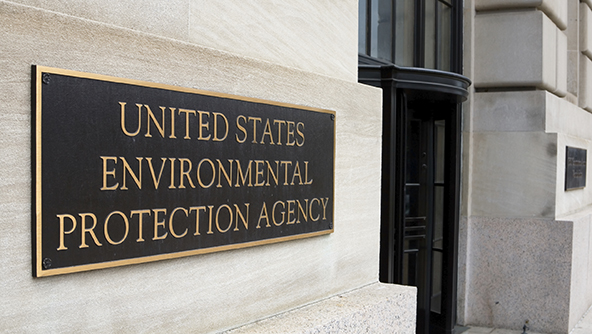OSHA head Dr. David Michaels has issued a letter encouraging the EPA to include alignment with GHS among its forthcoming revisions to the Toxic Substances Control Act (TSCA).
Part of the proposed EPA changes regarding Significant New Use Rules (or SNURs) would mandate that any SNURs issued in the future “require that a written hazard communication program be developed and implemented for the substance in each workplace in accordance with 29 CFR 1910.1200, the [GHS-aligned] OSHA HCS.” The revisions also propose that, “The specific statements and warnings that could be required [for SNURs] would be based on EPA’s risk assessment of the chemical substance and would be consistent with the OSHA HCS and GHS recommendations.”
Should the EPA align all or part of its revisions to the TSCA with GHS, it would be yet another step toward greater overall harmony between the EPA and OSHA — a journey which has hit several important milestones this year. In June, the EPA issued revisions to reporting requirements under the Emergency Planning and Community Right-to-Know Act (EPCRA) to make them more compatible with OSHA’s GHS aligned HCS. Specifically, the revised requirements mandated that facilities submit either GHS aligned SDSs or a list of chemicals grouped into categories as laid out under the GHS to their State Emergency Response Commission, their Local Emergency Planning Committee, and to local first responders as part of required Tier II reporting. The EPA also elected to replace its existing hazard category system with the hazard classes used in the OSHA HCS. In this connection, Tier II reports submitted by March 1, 2018 for the 2017 calendar year will need to reflect the HCS hazard categories as now adopted by the EPA using print or electronic reporting formats which will be made available before that time.
According to Dr. Michaels, further aligning TSCA revisions with GHS could make things even easier for businesses seeking to comply with both EPA and OSHA regulations. As Dr. Michaels states in his letter:
“OSHA modified the HCS in 2012 to conform to the United Nations’ Globally Harmonized System of Classification and Labelling of Chemicals (GHS). The GHS provides a common and coherent approach to classifying chemicals based on their hazardous properties and communicating hazard information to workers. By cross-referencing and ensuring consistency with the OSHA HCS, the proposed [TSCA] changes reduce duplication in effort and burden for those subject to these requirements.”
The Frank R. Lautenberg Chemical Safety for the 21st Century Act (the Lautenberg Act) was signed into law by President Obama in June of this year. It requires the EPA to evaluate existing chemicals with clear and enforceable deadlines, introduces a risk-based safety standard, and increases transparency around some chemical information. In October, the EPA announced that it was moving to fast-track its first five chemicals reviewed under the Lautenberg Act.
This is not the first time that Dr. Michaels has written to the EPA with input regarding the TSCA. In an undated letter from earlier this year, Dr. Michaels argued that the EPA may be more effectively positioned than OSHA to enforce chemical safety standards in certain situations, under the authority of the TSCA:
“Given certain limitations imposed on OSHA’s authority under the OSH Act, this agency believes TSCA provides the Environmental Protection Agency (EPA) with a means of eliminating or reducing the risks associated with these chemical uses in a more coordinated fashion . . .”
Whatever the EPA ultimately decides to do regarding GHS-alignment of the TSCA, cloud-based compliance management solutions from VelocityEHS allow your business to quickly and easily adapt to any regulatory changes that lie ahead. Our EHS management solutions give you the ability to assign and schedule tasks, track follow-ups, and send escalating notifications to employees when required actions are upcoming or past due. With VelocityEHS, you gain the visibility and control you need to manage your chemical inventory more effectively, and maintain compliance across your facilities. With the right solutions in place, you can be prepared to meet any obligations that may arise following revisions to the TSCA — along with your other EHS compliance requirements.







